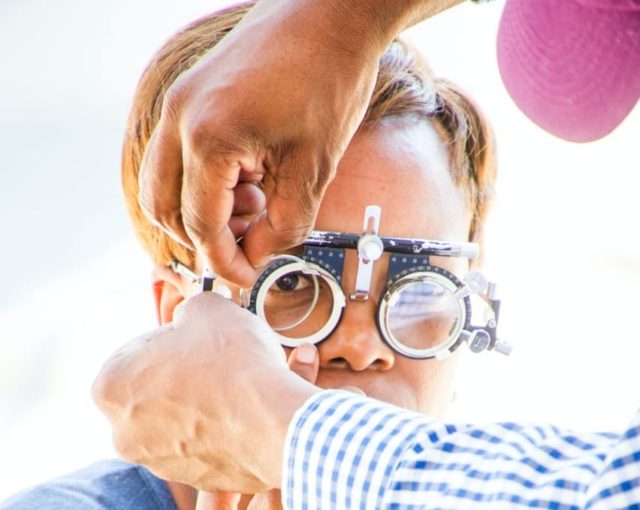
#Hope In Sight is the watchword for World Sight Day2020 (WSD). Every year on the second Thursday of October, WSD is celebrated across the world to focus on vision impairment and blindness. 3 out of every 4 cases of visual impairment can be cured. Yet, more than one billion people in the world are deprived of proper vision due to inaccessibility to a pair of glass and other visual aids. (1)
World Health Assembly, in association with the International Agency for Prevention of Blindness (IAPB), Universal Health Coverage, and World Health Organization, celebrates World Sight Day to enhance awareness about this major public health issue. They invite all government, medical and non-medical organizations, and NGOs to find solutions and work actively against vision impairment. With different campaigns, they want to spread the answer to the questions “what is world sight day”, and “what is its importance?” The main objective is to eliminate avoidable blindness. (2)
Table of Contents
An initiatives of the Indian Government for Blindness & Visual Impairment Control
The National Program for Control of Blindness & Visual Impairment is a central government scheme since 1976. It aims at the elimination of visual impairment and blindness by introducing comprehensive eye care services and enhancing awareness. Indian Government attempts to reduce blindness by 0.3% within 2020.
Causes of Blindness or Eyesight Problem
- Cataract, when remains un-operated.
- Refractive Error like nearsightedness or farsightedness and astigmatism if remains untreated for a long time.
- Corneal Blindness is caused by diseases on cornea gradually decreasing vision and induces blindness.
- Glaucoma disease gradually destroys the nerve carrying visual information from the eyes to the brain.
- Diabetic Retinopathy – Due to the fluctuation of blood sugar the blood vessels get damaged in the light-sensitive layer of the lining of tissues at the back of the eyes.(3)
Statics about Visual Impairment
World Sight Day focuses on facts, which helps individuals and organizations to learn about the statistics of visual impairment and take necessary action. The right data helps one plan for an effective action. According to findings by Vision Loss Expert Group on 2017: (4)
- 253 million populations across the world have problems related to eyesight.
- 36 million are blind.
- 217 million people suffer from moderate or severe visual impairment.
- 55% of the total visually impaired people are women.
Another report says (5)
- 90% of the people with the sight of sore eyes are from impoverished nations.
- 65% of people are above 50 years of age.
- A total of 19 million children have a visual impairment. Out of those 12 million are treatable. Rest 1.4 million has lifelong vision loss.
Precautions to Prevent Blindness
- Balanced Diet – Include proteins, minerals, vitamins and other nutrients to reduce the risk of blindness.
- Refrain from smoking – It enhances the risk of macular degeneration, cataract, and optic nerve damage.
- Protection from UV rays – Always wear sunglasses to protect eyes from UV rays.Wear good quality sunglass when steeping out in the sun. Bad quality sunglass can be harmful.
- Rest your eyes – After every 20 min look 20 feet away for 20 sec and rest the eyes.
- Use protective glass – While doing hazardous work or while getting continuously exposed to bright light, use protective glasses.
- Hygiene – Don’t touch or rub the eyes without washing the hands.
- Regular Check-up – One should go for a regular checkup to reduce the risk of diseases.
- OTC Drugs – Avoid over the counter drugs for infection in the eyes.
Kolkata Swasthya Sankalp(KSS) – Endeavoring To Eliminate Avoidable Blindness
KSS is a charitable organization that works for patients with a lower socio-economic status. It works mainly in three verticals, i.e. dialysis, avoidable blindness, and blood donation. KSS provides medical care with a qualified and expert medical team.
They perform door to door screening for diseases related to eyes among the urban poor and help identify diseases. As a part of the World Sight Day activities, they are proactively raising awareness regarding eyesight care. The team is dedicated to providing full-cycle care, from diagnosis to post-operative care. Some of their noble initiatives throughout the last three years are:
- Organizing 20 eye check-up camps.
- Treating over 10,000 patients.
- Distributed more than 7000 spectacles.
- Executing 25 complex eye surgeries.
- Operating more than 2000 cataracts cases.
- Operating a completely accomplished and equipped eye-screening center at Kyd Street, Kolkata.
Kolkata Swasthya Sankalp is supported by Calcutta Medical Research Institute, Lions Club, and Liver Institution.
This non-profitable organization has been fostered by Mr. Manish Jajodia, President of Anzen Exports. Anzen Export is one of the leading Active Pharmaceutical Ingredients exporters (API) across the world. They export many APIs used for making medications for the eyes as well as for other ailments.
Let us all take a step forward in curing avoidable blindness and visual impairment. International Agency for Prevention of Blindness (IAPB) urges each media, organization, and individual to actively take initiatives in this segment. Amidst COVID19, we may opt for a digital front to propagate this awareness and helps every personaffected get the help they need.
Disclaimer:
Anzen Exports’ blog posts are based just on our research from cited websites. To be best informed, we advise consulting a doctor about an ingredient or medicine prior to taking it.
Sources:
- The International Agency for the Prevention of Blindness
Website – https://www.iapb.org/advocate/world-sight-day/ - Enhanced Vision
Website – https://www.enhancedvision.com/world-sight-day.html - NHP India
Website – https://www.nhp.gov.in/world-sight-day_pg - NHP India
Website –https://www.nhp.gov.in/world-sight-day_pg - The International Agency for the Prevention of Blindness
Website – https://www.iapb.org/advocate/world-sight-day/ - Enhanced Vision
Website – https://www.enhancedvision.com/world-sight-day.html
